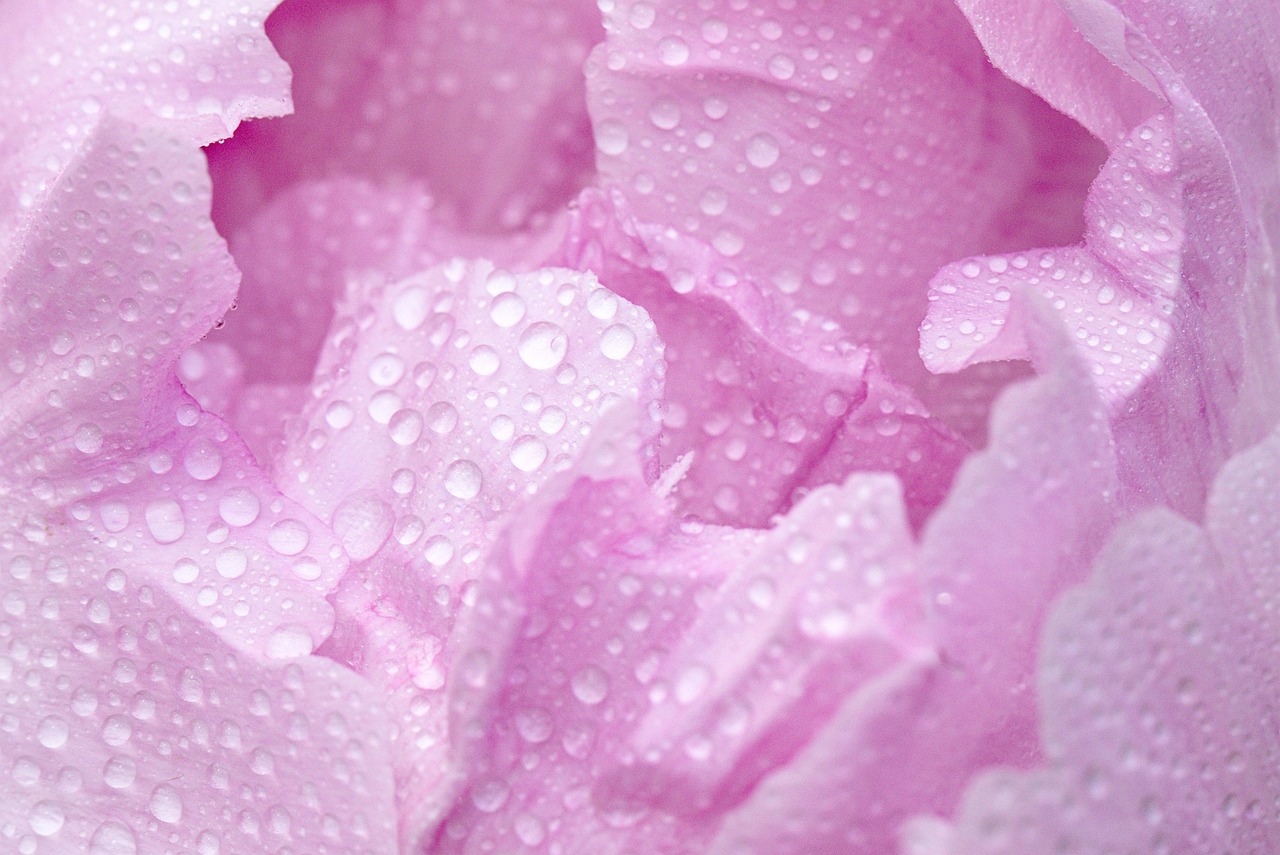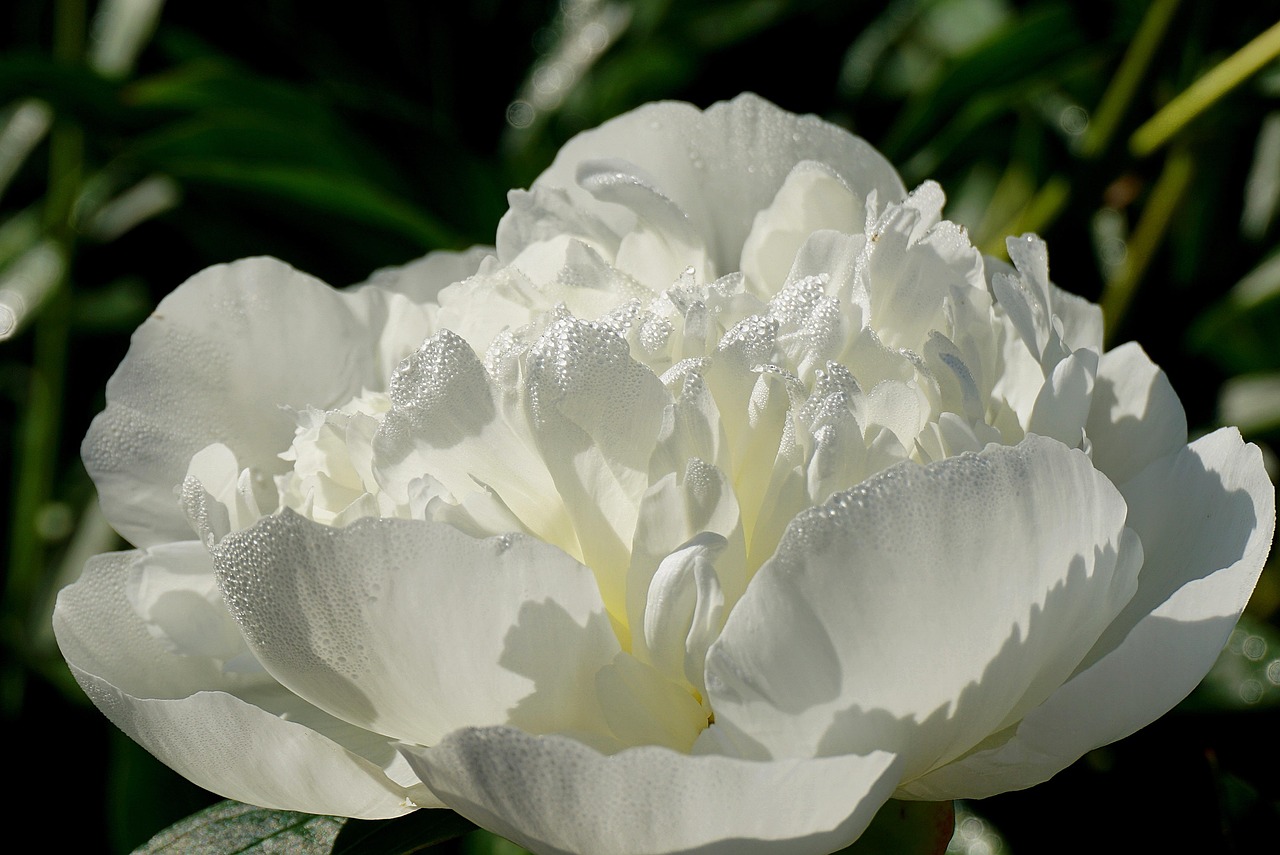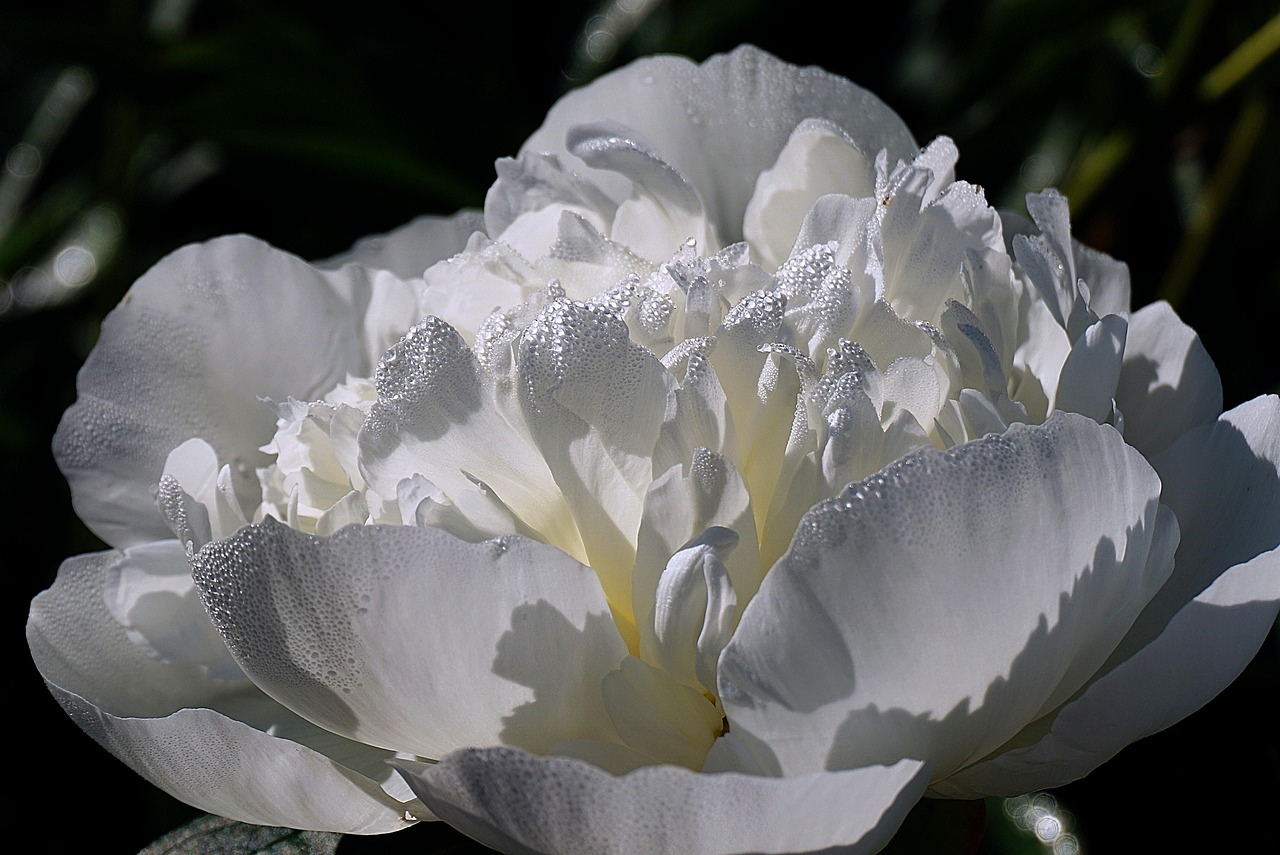Peonies are beautiful and fragrant flowers that can add elegance to your garden. However, they require specific care and conditions to thrive. Understanding the pros and cons of peonies will help you decide if they are the right choice for your garden.
Peonies are perennial plants known for their large, lush blooms. They typically bloom in late spring to early summer, offering a stunning display of colors ranging from soft pastels to vibrant hues. These flowers can live for decades, making them a long-lasting addition to any garden. However, they also have specific requirements that may not suit every gardener’s preferences or capabilities.

Before choosing peonies for your garden, it is essential to consider both their advantages and disadvantages. This will help you make an informed decision based on your gardening goals and environment.
Advantages of Peonies
Peonies have several positive attributes that make them appealing to gardeners. Here are some of the key benefits:
- Beautiful Blooms: Peonies produce large, fragrant flowers that can be a showstopper in any garden.
- Long Lifespan: With proper care, peonies can live for 50 years or more, providing beauty for generations.
- Low Maintenance: Once established, peonies require minimal care compared to other flowering plants.
- Diverse Varieties: There are many types of peonies, including herbaceous, tree, and intersectional varieties, offering a range of options for different garden styles.
- Attract Pollinators: Peonies attract bees and butterflies, which can enhance the biodiversity of your garden.
Disadvantages of Peonies
While peonies have many benefits, there are also some drawbacks to consider. Understanding these cons can help you determine if they fit well with your gardening plans.

- Specific Growing Conditions: Peonies prefer well-drained soil and full sun. They may struggle in overly wet or shady areas.
- Delayed Blooming: Peonies can take a few years to bloom after planting, which may be frustrating for impatient gardeners.
- Pest Issues: Peonies can be susceptible to pests like ants, which are attracted to their sweet sap.
- Heavy Blooms: The large flowers can be heavy and may require staking to prevent them from drooping or breaking.
- Limited Color Range: While there are many varieties, peonies do not come in every color available in other flowers.
Growing Conditions for Peonies
To successfully grow peonies, it is crucial to provide the right environment. Here is a table outlining the ideal conditions for growing healthy peonies:
| Condition | Ideal Requirement |
|---|---|
| Sunlight | Full sun (6-8 hours per day) |
| Soil Type | Well-drained, loamy soil |
| Watering | Moderate watering; avoid waterlogging |
| Fertilization | Balanced fertilizer in early spring |
| Spacing | At least 3 feet apart for air circulation |
By understanding these factors, you can create an environment where peonies will thrive. As you consider adding these stunning flowers to your garden, weigh their pros and cons carefully to determine if they align with your gardening goals and preferences.
Caring for Peonies
Caring for peonies is essential to ensure they flourish in your garden. While they are relatively low-maintenance plants, they do require specific practices to thrive. Here, we will explore the key aspects of peony care, including watering, fertilization, pruning, and pest management.

Watering Peonies
Proper watering is crucial for peony health. Here are some guidelines:
- Frequency: Water peonies deeply but infrequently. Aim for about 1 inch of water per week, either through rainfall or supplemental watering.
- Soil Check: Before watering, check the soil moisture. If the top inch of soil feels dry, it is time to water.
- Avoid Waterlogging: Ensure that the soil drains well to prevent root rot. Peonies do not like to sit in water.
Fertilizing Peonies
Fertilization can promote healthy growth and abundant blooms. Consider the following tips:
- Timing: Apply a balanced fertilizer in early spring as new growth begins. This provides essential nutrients for the season ahead.
- Type of Fertilizer: Use a slow-release fertilizer with equal parts nitrogen, phosphorus, and potassium. Organic options like compost can also be beneficial.
- Avoid Over-Fertilization: Too much fertilizer can lead to excessive foliage growth at the expense of flowers.
Pruning Peonies
Pruning is an important part of peony care that helps promote healthy growth and flowering. Here are some key points regarding pruning:

- Timing: Prune peonies after they bloom in late spring or early summer. This allows the plant to store energy for the next growing season.
- Technique: Cut back stems to about 2 inches above the ground. This encourages new growth while maintaining the plant’s shape.
- Remove Diseased Foliage: If you notice any yellowing or dead leaves, remove them promptly to prevent disease spread.
Pest and Disease Management
Pests and diseases can affect peonies, though they are generally resilient plants. Here are some common issues and how to manage them:
Common Pests
Peonies may attract a few pests that can cause problems. Here are some of the most common ones:
- Ants: Ants are often found on peonies due to their attraction to the sugary sap. While they do not harm the plant, they can indicate other pest issues.
- Aphids: These small insects can suck sap from the plant and cause leaf curling. Use insecticidal soap or neem oil to manage infestations.
- Spider Mites: These tiny pests thrive in dry conditions and can cause leaf discoloration. Regularly misting plants can help prevent them.
Diseases
Peonies can also be susceptible to certain diseases. Here are a few to watch out for:
- Botrytis Blight: This fungal disease leads to brown spots on leaves and stems. Proper air circulation and avoiding overhead watering can help prevent it.
- Powdery Mildew: This white powdery substance appears on leaves under humid conditions. Ensuring good spacing between plants can reduce humidity levels.
- Root Rot: Caused by overwatering or poorly drained soil, root rot can be fatal. Ensure adequate drainage and avoid soggy conditions.
Companion Planting with Peonies
Selecting companion plants for your peonies can enhance your garden’s beauty and health. Here are some excellent companions:
- Roses: Both flowers have similar care requirements and bloom at the same time, creating a stunning display.
- Lavender: The fragrant lavender complements peonies while deterring pests, making it an excellent choice.
- Salvia: This perennial is drought-tolerant and offers a beautiful contrast to peony blooms.
When planning your garden layout, consider these companions to create an attractive and harmonious garden space that benefits all plants involved.
Peonies Varieties and Their Characteristics
Understanding the different varieties of peonies can help you choose the right type for your garden. Each variety has unique characteristics, including flower shape, size, color, and growth habits. Below, we will explore some popular peony varieties.
Herbaceous Peonies
Herbaceous peonies are the most common type. They die back to the ground each fall and re-emerge in spring. Here are some notable features:
- Flower Types: They can have single, semi-double, or double blooms.
- Color Range: Available in shades such as pink, white, red, and yellow.
- Height: Typically grow between 2 to 4 feet tall.
Popular varieties include:
- Paeonia lactiflora: Known for its classic peony blooms, this variety is fragrant and comes in various colors.
- Paeonia ‘Sarah Bernhardt’: A favorite for its large, soft pink flowers and strong fragrance.
- Paeonia ‘Festiva Maxima’: Features white flowers with crimson flecks and a delightful scent.
Tree Peonies
Tree peonies are woody shrubs that can reach heights of 3 to 7 feet. They produce large, stunning blooms in late spring. Key characteristics include:
- Sturdy Structure: Unlike herbaceous peonies, they do not die back in winter.
- Bloom Size: Flowers are often larger than those of herbaceous types.
- Growth Habit: The plants develop a bushy appearance and require more space.
Notable tree peony varieties include:
- Paeonia suffruticosa: Known for its beautiful blossoms that come in shades of pink, white, and red.
- Paeonia ‘Kinkaku’: Features golden-yellow flowers that are quite rare and striking.
Intersectional Peonies
Intersectional peonies, also known as Itoh peonies, are hybrids between herbaceous and tree peonies. They combine the best traits of both types. Their features include:
- Growth Habit: They have a bushy form similar to herbaceous peonies but remain woody like tree peonies.
- Blooming Period: They bloom later than traditional herbaceous peonies.
- Color Variety: Available in a range of colors and often have unique flower forms.
Some popular intersectional varieties are:
- Paeonia ‘Bartzella’: A well-known hybrid with large, yellow blooms and a pleasant fragrance.
- Paeonia ‘Going Bananas’: Features vibrant yellow flowers with a touch of pink at the edges.
Planting Peonies: Step-by-Step Guide
If you decide to include peonies in your garden, proper planting techniques are essential for their success. Here is a step-by-step guide on how to plant peonies effectively:
Step 1: Choose the Right Location
Select a spot that receives full sun for at least 6-8 hours daily. The soil should be well-drained to prevent waterlogging.
Step 2: Prepare the Soil
Your soil should be fertile and rich in organic matter. Consider these steps:
- Add compost or well-rotted manure to enrich the soil.
- Test the soil pH; peonies prefer a slightly acidic to neutral pH (6.0 to 7.0).
Step 3: Planting Depth and Spacing
When planting peonies, follow these guidelines:
- Depth: Plant the tubers with the eyes (buds) facing up, about 1-2 inches deep for herbaceous varieties. For tree peonies, plant them at the same depth they were growing in their nursery pots.
- Spacing: Space herbaceous peonies at least 3 feet apart to allow for air circulation.
Step 4: Watering After Planting
Water thoroughly after planting to settle the soil around the roots. Ensure consistent moisture during the first growing season as the plants establish themselves.
Step 5: Mulching
Add a layer of mulch around the base of the plants to help retain moisture and suppress weeds during the growing season.
This step-by-step guide will help ensure your peonies grow strong and healthy, providing beautiful blooms for years to come. By selecting the right varieties and following proper planting techniques, you can create a stunning display in your garden.
Seasonal Care for Peonies
Understanding the seasonal care for peonies is essential to maximize their beauty and longevity. Each season brings specific tasks that can help your peonies thrive throughout the year.
Spring Care
As the growing season begins, spring is a crucial time for peony care. Here are some important tasks to perform:
- Clean Up: Remove any dead leaves or debris from the previous year to prevent disease.
- Support Structures: If necessary, install stakes or cages to support the peony stems as they grow, especially for tall varieties.
- Fertilization: Apply a balanced fertilizer early in the season to encourage robust growth.
Summer Care
During the summer months, maintain your peonies with the following practices:
- Watering: Keep the soil consistently moist but not soggy. Water deeply during dry spells.
- Weed Control: Regularly check for and remove weeds that can compete for nutrients and water.
- Observe for Pests: Monitor for any signs of pests or diseases and address issues promptly.
Fall Care
As fall approaches, peony care shifts to preparing the plants for winter:
- Pruning: After the foliage has died back, cut the stems down to about 2 inches above the ground. This helps to prevent disease.
- Mulching: Apply a layer of mulch around the base of the plants to protect roots from freezing temperatures.
- Soil Preparation: Consider adding compost or organic matter to enrich the soil for the next growing season.
Winter Care
Winter is a time of dormancy for peonies, but some care is still necessary:
- Protection: In areas with harsh winters, additional mulch may be beneficial to insulate roots.
- Avoid Overwatering: Ensure that the soil does not remain overly wet during winter, as this can lead to root rot.
Cultural Significance of Peonies
Peonies have a rich cultural history and are often associated with various meanings and traditions around the world. Understanding their significance can deepen your appreciation for these beautiful flowers.
- Symbolism: Peonies symbolize beauty, romance, and prosperity. They are often used in wedding bouquets and floral arrangements.
- Cultural Traditions: In Chinese culture, peonies are revered as the “king of flowers” and are believed to bring good fortune.
- Festivals: Many regions host peony festivals celebrating their blooms, where enthusiasts gather to appreciate their beauty.
The symbolism and cultural significance of peonies add an emotional depth to their beauty, making them not just plants but also cherished elements in various traditions.
Final Thoughts
Deciding whether peonies are right for your garden involves weighing their stunning beauty against their specific care requirements. These perennial favorites offer vibrant blooms, delightful fragrances, and a range of varieties to suit different landscapes. However, they do have unique needs, including adequate sunlight, well-drained soil, and careful watering practices.
The extensive seasonal care required helps ensure healthy growth and longevity. By understanding how to properly plant, care for, and manage your peonies throughout their life cycle, you can enjoy their beauty for decades. Additionally, their cultural significance further enriches their value as a garden addition, making them more than just flowers but symbols of love and prosperity.
If you are ready to enhance your garden with these magnificent blooms, consider your local climate and conditions. With the right care and attention, peonies can become a stunning focal point in your garden that brings joy year after year.
